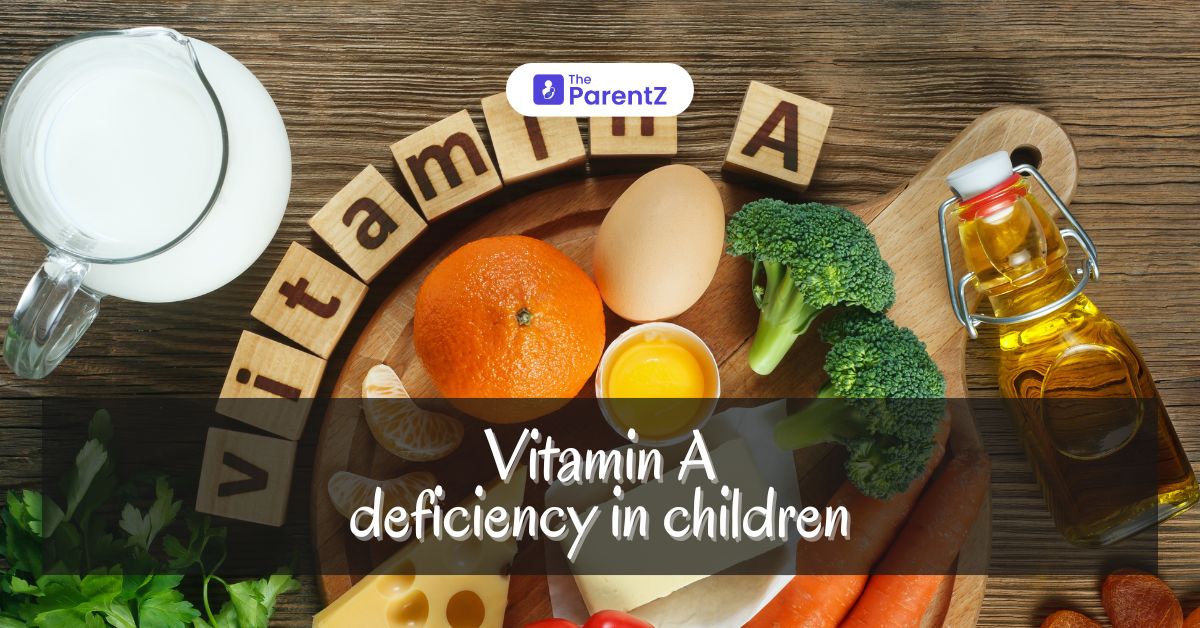What is Vitamin A deficiency?
Vitamin A deficiency occurs when there is an insufficient intake or absorption of Vitamin A, leading to depleted stores in the body. It is a significant public health concern, particularly in developing countries, and can have severe consequences for child health and development. This deficiency can result in a range of health problems, particularly affecting vision, immune function, growth and development.
What causes Vitamin A deficiency in children?
There are several factors that can contribute to a Vitamin A deficiency. Besides inadequate diet, other factors may also lead to a deficiency. The factors are as follows:
- The child has an inadequate dietary intake of Vitamin A-rich foods, particularly in underdeveloped or developing regions where access to nutritious foods is limited.
- The child has poor absorption of Vitamin A due to gastrointestinal disorders or malabsorption syndromes.
- There may be an increased demand for Vitamin A during periods of rapid growth and development, such as infancy and childhood which is not met by diet.
- A chronic illness or infection may increase the body’s need for Vitamin A or interfere with its absorption and utilization.
What signs and symptoms may be observed in Vitamin A deficiency in children?
The symptoms of Vitamin A deficiency can vary depending on their severity. Some general symptoms are common. Specific symptoms of Vitamin A deficiency concern the eyes. The symptoms of deficiency may include:
- Child may develop night blindness or difficulty seeing in low light conditions.
- The child may have dry eyes.
- The child has dry, rough, or scaly skin
- There is an increased susceptibility to infections, particularly respiratory and gastrointestinal infections.
- The child may have delayed growth and development.
- There is impaired wound healing.
- Severe corneal damage or blindness in severe cases
How is Vitamin A deficiency managed?
Managing Vitamin A deficiency involves supplementation of Vitamin A. It can include supplements or fortified foods. Additionally, improving dietary diversity and access to Vitamin A-rich foods can help prevent and address deficiency in the long term.
In some regions, public health interventions such as Vitamin A supplementation programs are also implemented by various government and health organisations to reach vulnerable populations including young children. A megadose of Vitamin A is given if your child has a deficiency. The exact dose depends on the age of your child and how severe the deficiency is.
What should I know as a parent?
As a parent, there are several ways you can help prevent and address Vitamin A deficiency in your child. Some simple steps which you may follow and common practices to keep in mind are:
- Ensure that your child receives a well balanced diet which is rich in Vitamin A-containing foods such as liver, eggs, dairy products, orange and yellow fruits and vegetables and leafy green vegetables.
- You should breastfeed your infant exclusively for the first six months of life, as breast milk provides a good source of Vitamin A.
- You can participate in Vitamin A supplementation programs or initiatives offered by healthcare providers or public health authorities.
- You should seek medical advice if you suspect your child may be experiencing symptoms of Vitamin A deficiency. Early detection and intervention can prevent complications and improve outcome in Vitamin A deficiency.
- Advocate for policies and programs that improve access to nutritious foods and healthcare services for vulnerable populations, including children and pregnant women, to address underlying factors contributing to deficiency.
- It is important to realise that Vitamin A deficiency is a serious health issue with potentially devastating consequences, particularly for children. You should understand its symptoms, causes, and treatment options and take proactive steps as parents.








Be the first one to comment on this story.